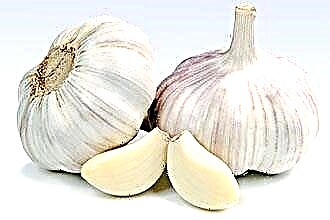Myocardial infarction is the leading cause of death worldwide. But the most dangerous is necrosis of the lower wall of the left ventricle. This area is a "dumb" area. It is this localization that presents significant diagnostic difficulties for practicing doctors. In the article, you will learn about modern methods of detecting pathology, specific symptoms and learn how to recognize it on an electrocardiogram.
What it is
Infarction of the lower wall of the left ventricle is a serious disease that requires immediate medical attention. It is characterized by the necrosis of the affected anatomical structures and their replacement with functionally inactive scar tissue. It occurs when there are the following reasons:
- atherosclerosis - the presence of lipid plaques in the vessels of the heart, which can significantly block their lumen;
- thrombosis - migration of blood clots, which occurs most often from the veins of the lower extremities, in patients with varicose veins or severe hypodynamics (severe illness, fracture of the femur, etc.);
- vascular spasm - can occur against a background of severe emotional stress.
My practical work proves that the predisposing factors are:
- male gender;
- over 45 years old;
- obesity (body mass index over 30);
- increase in blood pressure digits> 140/80 mm Hg (according to the American College of Cardiology> 130/80 mm Hg);
- smoking, alcohol and drug abuse.
Where is the lesion
The "target" of lower myocardial infarction is the left ventricle - the main and most massive component of the muscle "pump". Its size is 2-3 times larger than that of other parts of the heart. The thickness ranges from 11 to 14 cm, the myocardial mass index is 109-124 g / m² for women and men, respectively. Blood supply is carried out through two important vessels - the right coronary and circumflex arteries. From this part of the heart comes the most important arterial vessel - the aorta.
Thus, I can conclude that the left ventricle needs ample circulation and much more oxygen than other areas of the myocardium. In this regard, it is he who is affected as a result of a cardiovascular catastrophe in almost 100% of cases. And the posterior wall, divided into the diaphragmatic and basal regions, is affected only in 10-15%. But I want to note that when it is involved in the pathological process, great difficulties arise in diagnosis. Standard 12 electrocardiographic leads do not register damage to this anatomical segment ("silent" zone).
In most cases, inferior myocardial infarction is accompanied by damage to the adjacent areas - posterior septal, posterior inferior and posterolateral.
This combination saves the lives of many patients, as changes are clearly recorded on the ECG waveform.
How to suggest a diagnosis
The main criterion that prompts the idea of an acute lower myocardial infarction is complaints of prolonged pain in the retrosternal region. But in order to accurately make the correct diagnosis, it is necessary to conduct a number of laboratory and instrumental types of research.
My patients go through:
- ultrasound examination of the heart. Areas with completely absent or reduced myocardial contractility are clearly defined, indicating the presence of zones of necrosis or scarring;
- general blood analysis. Possible growth of leukocytes and erythrocyte sedimentation rate;
- troponin test. The modern and most accurate method for diagnosing lower myocardial infarction, which reflects damage to the muscles of the body, including the heart;
- coronary angiography. It is carried out to detect the affected coronary vessels.
An increase in the number of troponins I and T in isolated lesions of the posterior wall may also be absent, since the lesion focus is insignificant. In addition, the test results become positive after 7-8 hours. Isn't it an insidious localization of pathology?
Specific symptoms
In my opinion, the most important symptom of inferior myocardial infarction is chest pain. Its main differences are:
- baking, burning, oppressive character, less often a feeling of discomfort;
- duration more than 15 minutes;
- ineffectiveness of nitrates and sydnone imines (Sidnopharm, Nitroglycerin, Molsidomin);
- the ability to give to the left half of the body, throat, lower jaw, less often the right hand, stomach.
Also, in the clinical picture of the disease, one can find shortness of breath, a dry cough (possibly with streaks of blood), edema of the limbs and body cavities, pallor of the skin, increased sweating. Cardiac arrhythmias are very rare, since there are no leading pathways in the lower wall of the left ventricle.
Expert advice
Pay attention to the following symptoms, they are the ones that precede the development of lower left ventricular myocardial infarction:
- A sharp jump in blood pressure numbers.
- An episode of an abnormal heart rhythm.
- Sudden feeling of shortness of breath, heavy sweating, chills, or severe headache.
- An attack of unstable angina pectoris.
ECG signs
I give electrocardiography to my patients first of all. Isolated basal necrosis is not recorded on it. For the diaphragmatic section, there are indirect signs (bifurcation of the R wave, an increase in its amplitude and a decrease in the S depth in V1 and V2, equality of the S and R voltage in leads I and II, T rise in V1-V2).
With the involvement of the posterior diaphragmatic and posterior inferior parts in the process in II, III and AvF, changes typical for a heart attack appear (pathological Q, ST elevation) with reciprocal reflection in I and AvL. With posterolateral lesion, signs of a heart attack are additionally recorded in V5, V6.
I want to note that in the presence of a typical clinical picture, the patient should receive all the necessary medical care, even in the absence of changes in the electrocardiogram.
Clinical case
A man, 58 years old, was brought to me with complaints of sudden shortness of breath, severe sweating, typical chest pains were absent. Auscultation in the lower parts of the lungs heard moist fine bubbling rales. A complete blood count and electrocardiography did not give any results. EchoCG showed akinesia zone in the basal parts of the left ventricle. The first troponin test was negative, the second one became positive 1 hour after hospitalization. As a result, he was diagnosed with “Acute myocardial infarction of the lower wall of the left ventricle. OSN 1 "
The patient received treatment, which consisted in the appointment of antiplatelet agents (Aspeter), anticoagulants (Enoxaparin), beta-blockers (Metoprolol) and nitrates (Nitroglycerin). The general condition stabilized after 10 days, there were no complications.
Knowledge of the specific symptoms of acute myocardial infarction is necessary not only for doctors, but for all people, at least in order to seek medical help in a timely manner.



